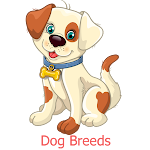
Dogs have been man's best friend for thousands of years, with some breeds being particularly ancient. These ancient breeds have been around for centuries and have a rich history. In this article, we will take a look at the top 10 most ancient dog breeds that have stood the test of time.
1. Saluki
The Saluki is one of the oldest known breeds of domesticated dog. It is believed to have originated in the Fertile Crescent and has been used for hunting in the Middle East for thousands of years. The Saluki is known for its sleek and elegant appearance, as well as its incredible speed and agility.
2. Basenji
The Basenji is a small, elegant hunting dog that originated in Africa. It is known for its unique yodel-like bark and its independent nature. The Basenji is believed to have been kept by ancient Egyptians and is often depicted in ancient Egyptian art.
3. Akita
The Akita is a large and powerful dog that originated in Japan. It has a long history as a companion and hunting dog in Japan, and was also used in battle. The Akita is known for its loyalty and courage, and has a strong sense of family and loyalty to its owners.
4. Chinese Shar-Pei
The Chinese Shar-Pei is a distinctive looking breed with loose, wrinkled skin and a unique "hippopotamus" head shape. It is believed to have originated in China over 2,000 years ago and was used for hunting, herding and guarding. The Chinese Shar-Pei is known for its loyalty and protective nature.
5. Afghan Hound
The Afghan Hound is an ancient breed that originated in the mountainous regions of Afghanistan. It is a sighthound, which means it hunts primarily by sight and speed. The Afghan Hound is known for its long, flowing coat and elegant appearance.
6. Pharaoh Hound
The Pharaoh Hound is a dog breed that is thought to have originated in ancient Egypt, where it was used for hunting. It is a medium-sized dog with a sleek, athletic build and a short, glossy coat. The Pharaoh Hound is known for its intelligence and loyalty.
7. Siberian Husky
The Siberian Husky is an ancient breed that originated in the harsh environment of Siberia. It was originally bred by the Chukchi people as a sled dog, and has been used for thousands of years as a working and companion dog. The Siberian Husky is known for its endurance, intelligence, and friendly demeanor.
8. Basque Shepherd
The Basque Shepherd is an ancient breed that originated in the Basque country of Spain and France. It has been used for centuries as a herding dog, and is known for its intelligence, agility, and strong herding instincts.
9. Shiba Inu
The Shiba Inu is a small, agile dog breed that originated in Japan. It is one of the oldest and smallest native breeds of Japan and was originally used for hunting small game in the mountainous regions of the country. The Shiba Inu is known for its spirited personality and loyalty to its family.
10. Samoyed
The Samoyed is a gentle and friendly ancient dog breed that originated in Siberia. It was used by the Samoyedic people of Siberia as a working dog, primarily for herding reindeer and pulling sleds. The Samoyed is known for its fluffy, white coat and its friendly and affectionate nature.
Conclusion
These ancient dog breeds have stood the test of time and have a rich history dating back thousands of years. They have been valued for their unique traits and abilities, and continue to be beloved companions and working dogs today.
FAQs
Q: Are ancient dog breeds more difficult to train?
A: It depends on the individual breed and their natural instincts. Some ancient breeds, such as the Basenji, are known for being more independent and may require a more patient approach to training.
Q: Do ancient dog breeds have more health problems?
A: Like all breeds, ancient dog breeds can have specific health issues, but many of them are generally healthy and robust due to their long history of natural selection and adaptation.
Q: Are ancient dog breeds good with children?
A: Many ancient dog breeds are known for their loyalty and gentle nature, and can make great companions for children. However, it's always important to socialize and supervise interactions between dogs and children.


